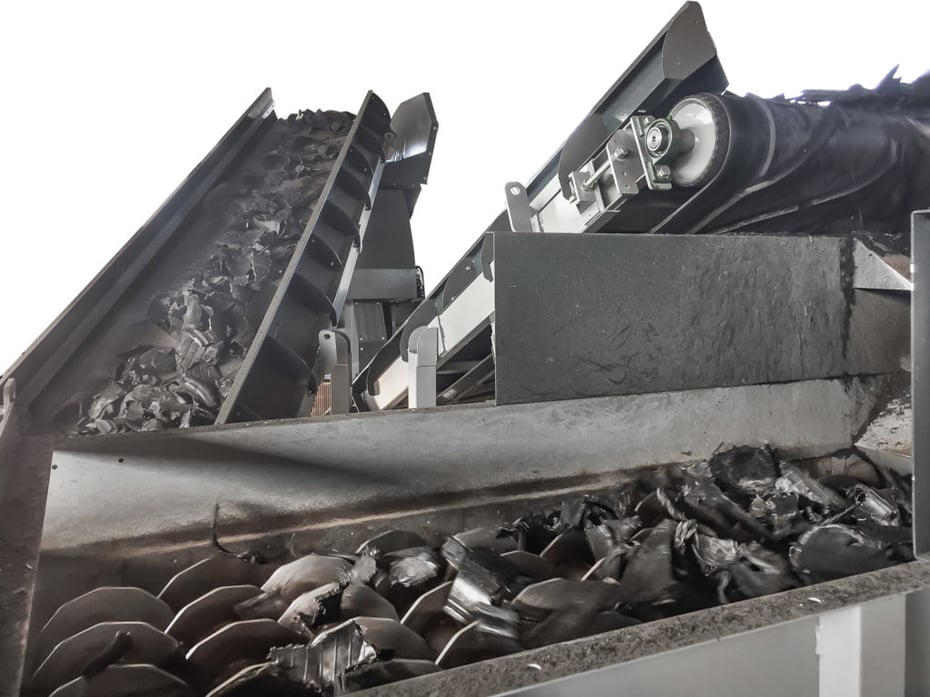Waste shredding is a complex process that involves a series of successive steps, which are essential to avoid damaging the machine during the treatment and to obtain a final product with a considerably reduced volume compared to that of the starting material.
The shredding process includes:
- Selection of the waste, which before being shredded is divided into batches as homogeneous as possible from the point of view of the type of material present. This step is essential to avoid that incompatible materials converge inside the shredder, which could interact in an unexpected and potentially dangerous way, causing for example fires or explosions.
- Loading of the materials to be shredded inside the shredder, which can be done by hand, using a hydraulic arm or a crane or using a conveyor belt.
- Real shredding of the material, which is first roughly cut and then ground. If the shredder is a single-shaft one, this phase requires the material to be pushed forward towards a rotating roller that shreds the materials with the help of a pusher; if the shredder is double shaft, on the other hand, the blades are hooked to two counter-rotating shafts equipped with hooks that hook the product to be ground and drag it to the point of action of the blade
- Output of the shredded material, which normally occurs by gravity. The shredded material is then transported by a belt, to then be stored in a warehouse or on a vehicle that will transport it to the landfill. If the shredder is equipped with a grid, the material leaves the plant with a predefined size, while, otherwise, the size will not necessarily be uniform, even if the volume of waste will be considerably reduced.


